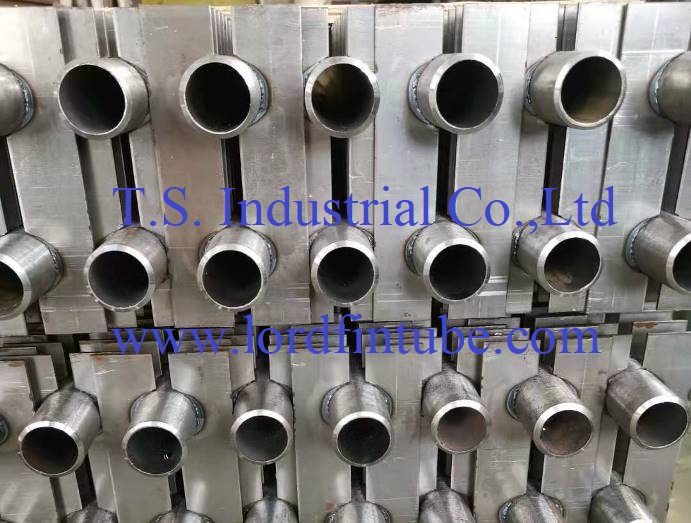H finned tubes are produced as single or double tubes according to customer specifications. They are especially suitable for dusty flue gases, e.g. economizers in:Biomass plants, Coal fired units, Oil fired units, Waste to energy plants. H fin tube is used to recover the gas waste heat of the power station boiler, the industrial boiler, the industrial kiln, the ship power plant and etc, and effectively improve the utilization rate of the fuel, and the heat exchange element is arranged at the tail of the system flue.
Description of H-fin boiler tubes
The heat transfer tube of the boiler adopts the H-shaped fin tubes, it is to weld two pieces of steel with arcs in the middle of the arc symmetrically onto the raw tube to form the fins (ribs), the front shape is quite like the letter "H", so it is called H-finned tube. The fins of the H-finned tube are rectangular, approximately square, with a length of about 2 times the diameter of the tube and an extended heating surface. H-finned tube can also be made into "double H" finned tube of double-tube, with good rigidity structure, it can be applied to the longer row of the tubes.
 Advantages of H-finned tube:
Advantages of H-finned tube:
The H-finned tube is the main heat exchange component in the whole exhaust gas boiler, and the H finned tube has the following advantages.
(1) Excellent wear resistance
The H finned tube heat exchanger is arranged in line, and the H fins separate the space into several small areas, which have the effect of equalizing the air flow, comparing to the smooth tube heat exchanger with the staggered arrangement and the spiral finned heat exchanger And so on, in the same other conditions, the wear life is higher 3~4 times.
(2) Fouling reduced
The formation of fouling occurred in the dorsal side and windward side of the tube. The staggered arrangement of the tube is easy to flush the tube bundle, the fouling at back side is less. It has a good self-cleaning function at the appropriate wind speed. On both sides of the H finned tube are formed straight channel, soot, it can get the best soot effect while adopting soot blower.
(3) Reduce the resistance of exhaust gas
As the H fins form straight channels on both sides, and the spiral angel of the spiral fins steer the direction of the airflow, the fins are prone to fouling and have a greater flue resistance than the H fins. Therefore, the use of H-finned tube can reduce the wind resistance, reduce the fan operation and investment costs.
(4) Fins and steel pipe welding fusion rate is high
Since the H fins have a unique zigzag structure (patented), the weld fusion rate for fins and steel pipes can be as high as 98% or more, to ensure a good heat transfer coefficient for H-finned tubes.
(5) Compact structure, high heat efficiency
The heating area per unit length is large, which of the H finned tube is 7.8 times of the smooth tube, The butt welds are all welded by argon arc welding, its welding quality is improved much higher than that of the manual welding. With the size and the weight of the equipment greatly reduced, therefore, in the same heat transfer surface, the equipment investment is greatly reduced, and larger space can be provided to the users on the aspect of the equipment installation.
(6) Shock-proof and noise reduced
Due to the device structural design and the structural characteristics of the H finned tube, it has the structural characteristics of the muffler, so the equipment can function as a muffler.
(7) Convenient for installation, operation and maintenance
While installation, it only need to connect the equipment to the exhaust gas outlet of HFO engine units, the equipment can be put into normal operation; exhaust gas boiler has check door, which can be determined the cleaning cycle according to the actual situation to ensure the heat transfer effect and increase the working life.
Application of H Fin Tubes:
Waste heat boiler tube; Economizer tube; Power station boiler tube; Marine boiler tube; Heat exchanger
Comments
Post a Comment